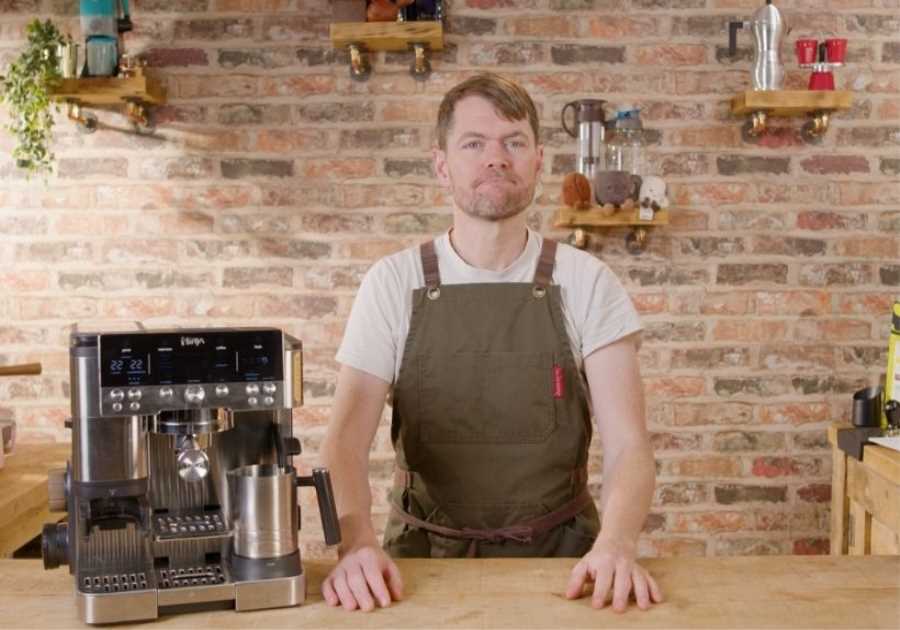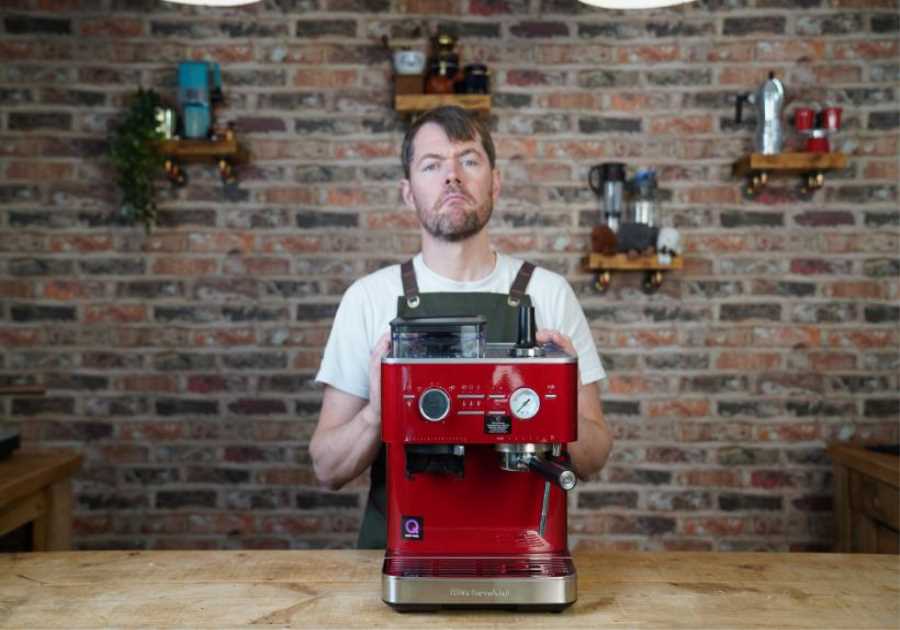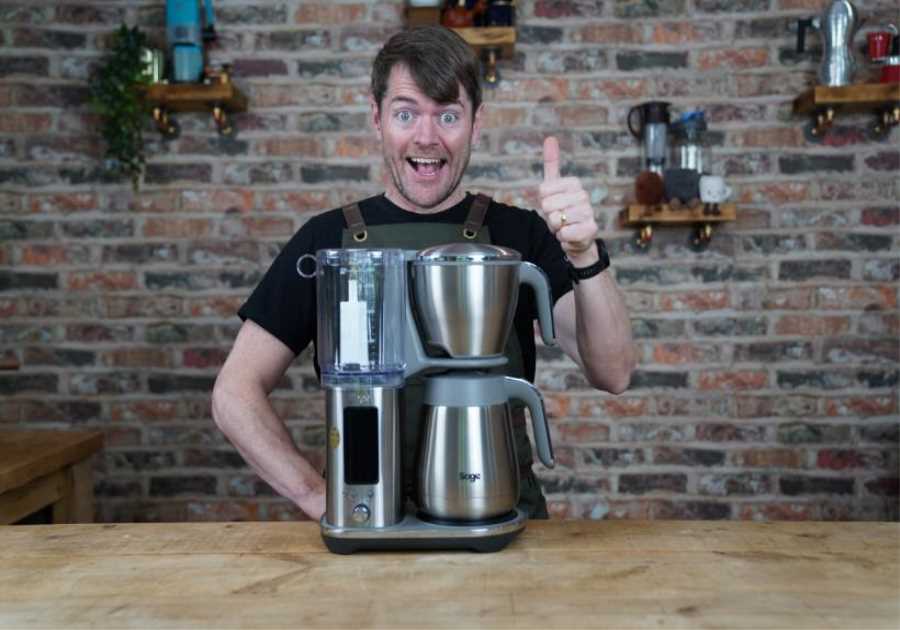In coffee shops across the world, one of the most common challenges baristas face is ensuring that espresso extraction remains consistent throughout each day. Ultimately, creating repeatable recipes for espresso leads to more consistent-tasting coffee, thereby increasing customer satisfaction.
However, in order to extract espresso consistently, baristas must have an in-depth understanding of several extraction variables and how they influence coffee flavour. These include dose, yield, and extraction time.
Shaun Aupiais is a co-founder of the Red Band Academy, a barista training school in South Africa. Shaun is a coach at the academy, which trains young people from South Africa to develop their barista skills, with a focus on future employment opportunities.
In this article, Shaun discusses the different extraction variables which baristas need to understand in order to perfect their espresso recipes.
You may also like our article on dialling in espresso.

Three key variables: dose, time, and yield
Learning how to extract great-tasting espresso can be tricky, but there are three variables which you should always take into account.
The first one is the dose. This is the amount of ground coffee which you place in the portafilter to extract as espresso. In most coffee shops around the world, doses typically range between 16g and 22g per double shot of espresso, but this is dependent on the coffee.
Most commercial grinders dose coffee by either time or weight. Generally, gravimetric grinders are preferable to time-based grinders, as they provide more consistent dosing, which can help speed up workflow.
The second variable is extraction time. Typically, time is measured from the moment you insert the portafilter into the machine and begin pushing water through the puck, right up until you reach your target espresso weight. This measures the length of time for which the water is in contact with the coffee grounds.
While total extraction time varies for every coffee you use, it generally ranges between 25 and 30 seconds. If the coffee grounds and water come into contact for too little or too long, it will result in under or overextracted espresso.
Weight (or yield) is the third extraction variable. This is the volume of liquid espresso that you are extracting from the coffee grounds (often called the puck). The average weight of espresso in most coffee shops is between 45ml and 60ml per double espresso – but again, this depends on the coffee you’re using.
So, how can you bring all three variables together to achieve the perfect extraction? Well, there is no magic recipe or quick solution – it takes plenty of practice and persistence.

Understanding grind size
Espresso requires a finer grind size than most brewing methods, as it’s a more concentrated beverage. Grinding this fine allows for more of a balance of acidity, sweetness, and bitterness in the flavour profile – enabling you to find a “sweet spot”.
However, there is such a thing as grinding too fine for espresso. The stone and sand analogy is commonly used to demonstrate why this is important for baristas to note.
Imagine you had a plant pot filled with sand and another pot filled with small stones. If you pour the same amount of water into them at the same time, water will pass through the stones almost immediately. However, the same amount of water won’t pass through the sand at the same rate, because sand is more dense than stone.
This analogy also works with ground coffee: the finer the grind, the slower the extraction. This is because the tighter the grounds can pack together, the slower water passes through them.
Conversely, if the grind is coarser, extraction time will reduce because water can more easily find the path of least resistance through the coffee grounds.
Experimenting with grind settings gives the barista the ability to manipulate extraction, therefore changing the flavour of the coffee. With that said, it’s still incredibly important to make sure you get the grind right.
If the grind is too coarse, the coffee will taste sour, watery, and weak, as it will underextract. Conversely, if the grind setting is too fine, it will be overextracted. The coffee will taste bitter, burnt, or even rancid in the worst cases.
Ensuring that you’re using the right grind setting for your espresso is the one of the most important steps in calibrating your espresso recipe.
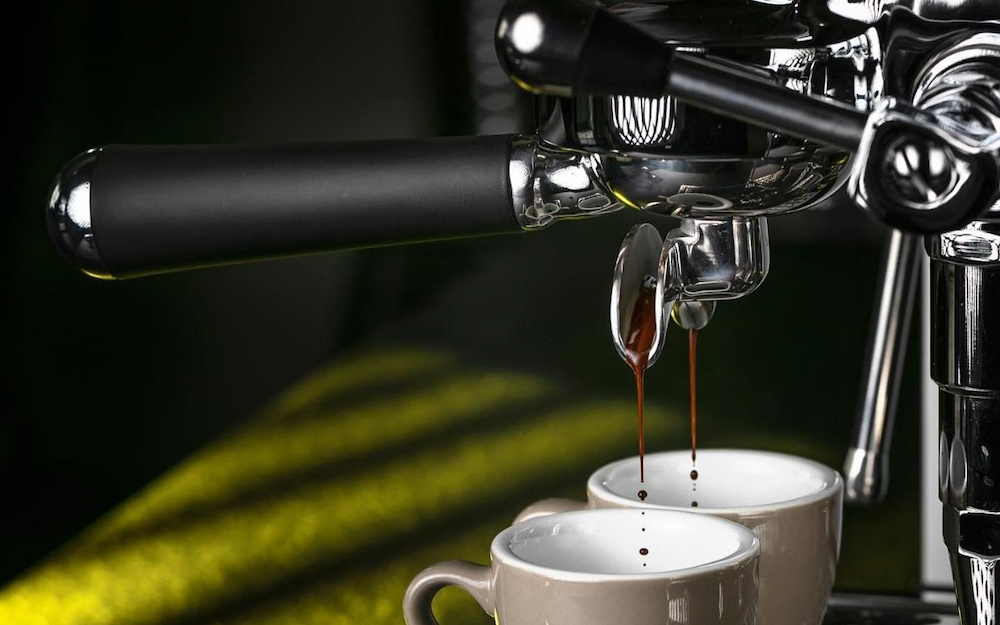
Changing your espresso recipe
Creating and following a recipe is essential to achieve the best possible result for your espresso. Baristas often make minute, incremental changes to these recipes at the beginning of each shift to perfect them, which is a process known as “dialling in“.
In general, the three main variables you have to consider when tweaking a recipe are indeed dose, time, and yield.
So, what do you need to dial in and perfect your espresso recipe?
First things first, using scales to weigh both dose and yield is essential to extract consistently high-quality espresso. Moreover, scales with built-in timers can help, as they keep track of both time and weight.
Here are a few pointers to help you improve your recipes:
- Only change one variable at a time. For example, if you change the dose, then keep the extraction time and yield the same. You should also keep the grind size the same.
- Always alter your grind size after changing the dose, extraction, and yield. The grind size may need to vary depending on how the coffee has been roasted.
- Remember that changing the grind size allows you to hone in on that “sweet spot” – the perfect balance of acidity, sweetness, and bitterness.
- Always weigh the dose, especially if the grinder is time-based, rather than gravimetric. This will improve consistency of every shot you pull.
- Regularly check your grind size as it can change over the course of the day. Certain external factors, such as temperature or humidity, can actually alter your grind size if you’re not checking it often.
- If you’re able to, set the required yield weight on your espresso machine for your recipe. This means extraction will automatically stop once a set yield is reached. Most machines have a few different buttons which you can programme for different espresso recipes (single, double, ristretto, or lungo).
- If your machine doesn’t have this feature, you can use volumetric shot glasses to measure the volume of espresso.
However, it’s important to note that espresso recipes can sometimes be unconventional. For example, I was recently holding a training programme in Uganda and we experimented in a number of ways to get the best out of the coffee we were using.
Eventually, we settled on a dose between 19.5g to 20g, with a yield between 55ml and 60ml in 20 to 22 seconds. Although this extraction time was on the lower end, we found that this recipe resulted in the best flavour, balance, finish, and body for this particular coffee.
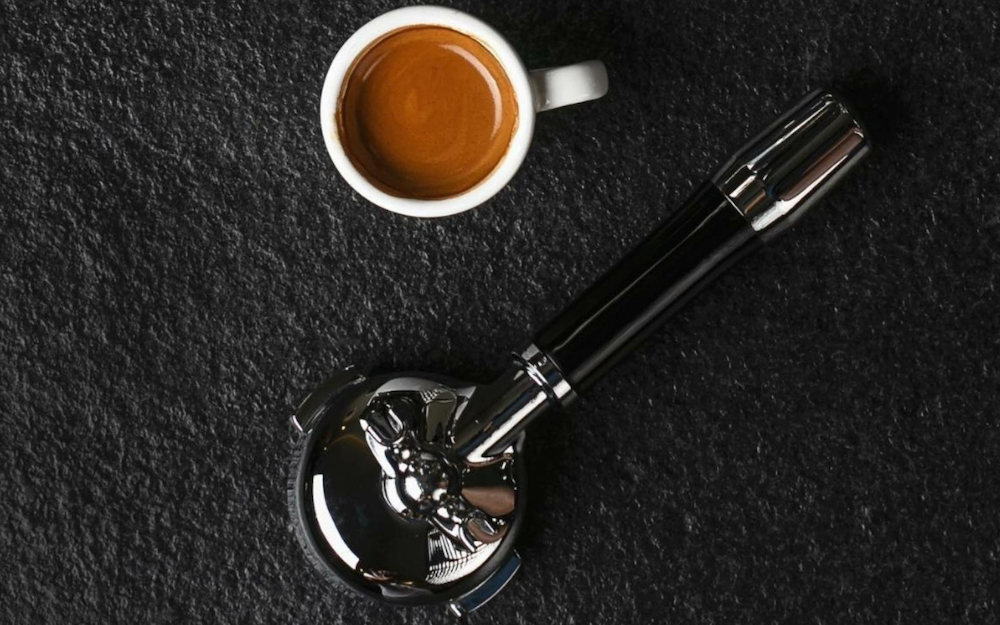
What are the challenges when adjusting grind size?
Altering grind size is an important daily practice for any barista, and something that should be continuously checked throughout each shift. But there are a number of factors to consider when changing your grind setting.
After changing the grind size – no matter how small the adjustment – remember to purge the grinder. This means pulling one or two doses from the grinder before discarding them. By doing so, you are more likely to be extracting shots using the correct grind size.
Making the grind more coarse will increase the dose.
As you make your grind size coarser, the grinder will separate the burrs further, which allows more coffee to flow through them. If your grinder is gravimetric, you will need to readjust the dose settings to compensate for any changes made.
Conversely, the dose will become lower if you make the grind size finer. Similarly, this is because the position of the burrs changes when you adjust the grinder; they get closer together, which means less coffee can pass through them.
Again, consider readjusting the dose on your weight-based grinder after changing the grind setting.
Regularly cleaning and maintaining your grinder is key, especially for the grinding chamber and spout. Blockages can be caused by foreign objects, large chunks of coffee beans, or even a build-up of coffee oils.
Removing and brushing the burr set, as well as running commercial-grade cleaning tablets through the grinder, can help remove any remaining grounds and oils. This will not only keep your grinder in good working condition, but will also help to improve the flavour of your espresso (as it won’t be contaminated by old coffee grounds).
If you notice any extreme changes to your grind size, you may need the support of a specialist technician. Over time, burrs can wear and may need replacing, especially in coffee shops which grind large volumes of coffee per day. Keeping your burrs sharp will improve the consistency of your grinder, and therefore help you to improve extraction in the long run.
Finally, if you’re having trouble dialling in your espresso, don’t always assume that it’s because of the grinder. Check the hardness and quality of your water supply, as well as making sure if the groupheads are set at the correct temperature – typically between 90°C and 96°C (194°F and 204°F). If in doubt, contact a qualified technician for further support.

Dialling in espresso can be a challenging yet rewarding task. When done properly, it can open up an entirely new world of possibilities as far as espresso is concerned.
Mastering the art of calibrating your espresso recipes takes a great deal of practice. But once you understand the effect of each variable on the coffee’s flavour profile, you will be able to pull great-tasting shots again and again.
Enjoyed this? Then read our article on a beginner’s guide to tasting espresso.
Photo credits: Paul Mordheweyk
Perfect Daily Grind
Want to read more articles like this? Sign up for our newsletter!
The post A guide to calibrating your espresso recipes appeared first on Perfect Daily Grind.
By: Shaun AupiaisTitle: A guide to calibrating your espresso recipes
Sourced From: perfectdailygrind.com/2022/04/a-guide-to-calibrating-espresso-recipes/
Published Date: Wed, 27 Apr 2022 05:35:00 +0000

